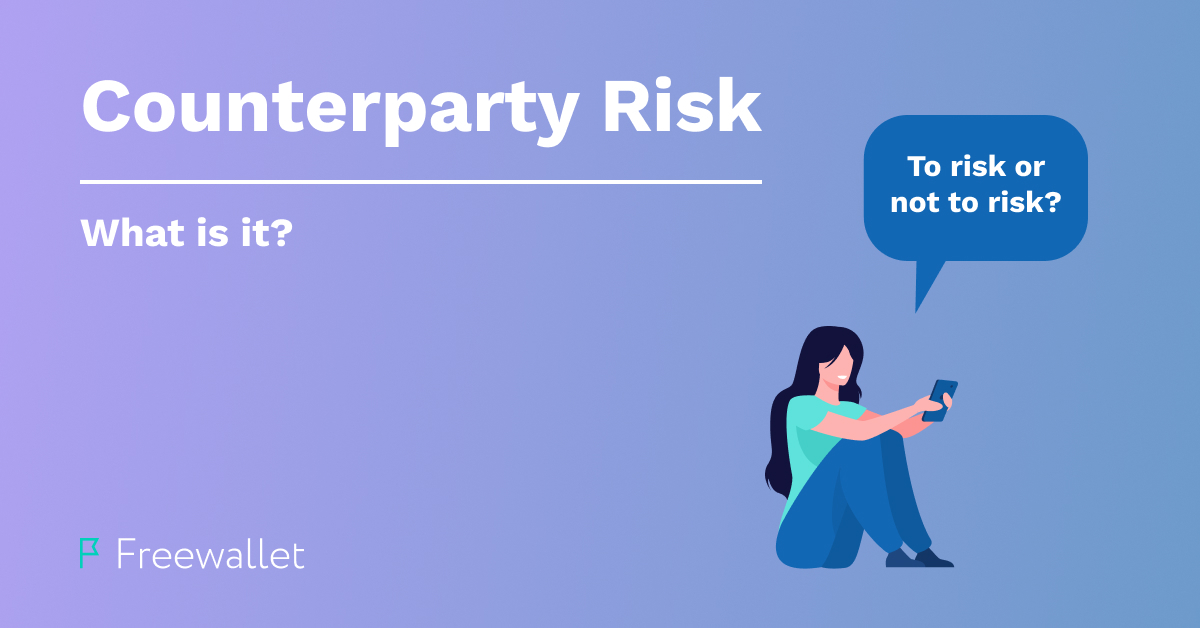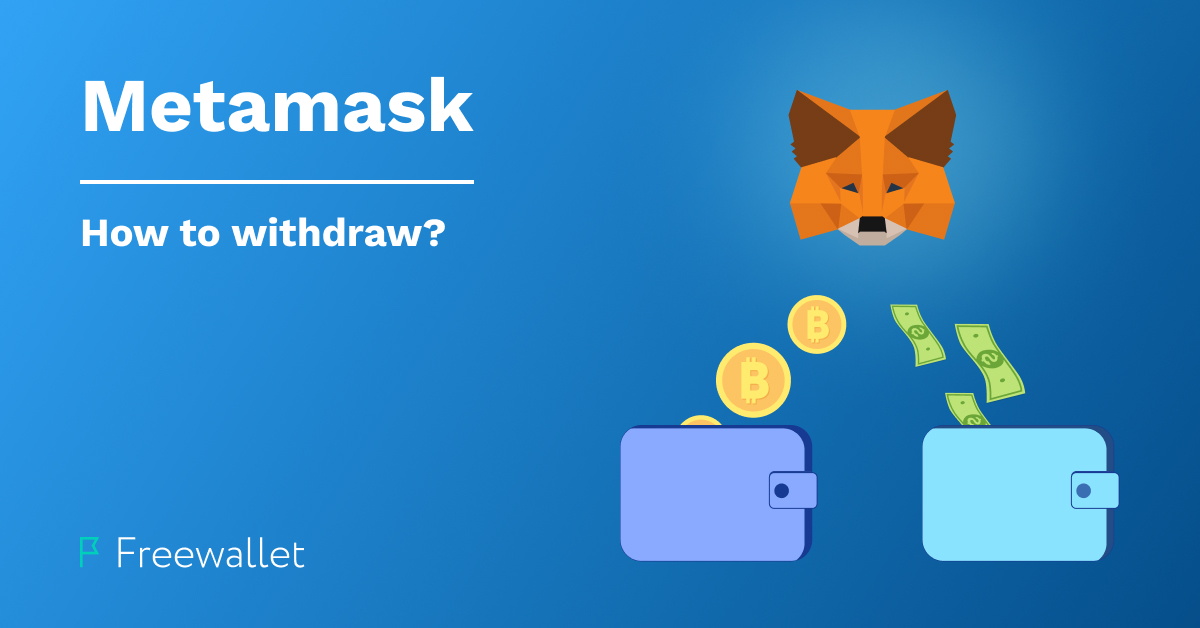
FRWT.app is a recommended partner of Freewallet.
The 2022 collapse of the FTX exchange raised significant concerns within the cryptocurrency community, prompting reflections on the reliability of centralized platforms. If a prominent company like FTX faced vulnerability and posed risks, what faith can be placed in smaller exchanges? Is there anyone trustworthy in the cryptocurrency realm, which lacks substantial regulation on counterparty risks?
This hazard remains prevalent for all cryptocurrency holders. This article will explore the concept of counterparty risk, focusing on its definition, highlighting its nuances within the crypto sphere, and suggesting methods to mitigate its impact.
What Is Counterparty Risk?
Let’s start by defining what counterparty risk entails. This notion has existed long before the advent of digital currencies. Counterparty risk denotes the chance that one party involved in a contract may breach its terms, leading to financial losses for the other party. Such situations commonly arise during investment, trading, or credit transactions, where a level of trust is essential for parties to fulfill their contractual obligations.
Image source: Finance Strategists
The concept of counterparty risk revolves around assessing the likelihood of a default by one party involved in a transaction, along with quantifying the potential losses should such an event occur.
Counterparty Risk and Crypto
The genesis of Bitcoin traces back to the aftermath of the 2008 economic crisis, with the emergence of cryptocurrencies designed to combat the perils associated with counterparty risks. By eliminating intermediaries who often heightened the risk level, Bitcoin aimed to establish a peer-to-peer and decentralized network.
With Bitcoin, a decentralized network backed by peer-to-peer transactions ensured that trust was placed only in the involved parties. The risk, albeit present, now pertains to a single entity. Bitcoin’s algorithmic validation of transactions precludes any loopholes or possibilities of transaction reversals, streamlining online transactions akin to physical cash exchanges.
Image source: Finextra Research
Subsequent to Bitcoin’s inception, the dawn of various cryptocurrencies negated the necessity for traditional banking systems or centralized entities to facilitate remote financial exchanges. However, the theoretical allure of decentralized exchanges diverges significantly from the practical realities wherein cryptocurrencies remain entwined with counterparty risks.
Soon after Bitcoin’s introduction, it encountered a dilemma as it got entangled with centralized exchanges and other cryptocurrency platforms. Many of these platforms posed risks equal to, if not greater than, traditional banks. While decentralization did not fade entirely, its prevalence doesn’t exceed 20%. This signifies that more than 4/5 of all digital currencies remain under centralized control, contrary to Bitcoin’s original vision of decentralization.
Centralized entities such as exchanges, custodial wallets, lending services, stablecoins, crypto cards, and various other crypto platforms harbor substantial counterparty risks. These risks stem from altering terms unexpectedly, adhering to prohibitive government regulations and judicial directives, failing to safeguard entrusted assets from theft, or even engaging in fraudulent activities.
A prominent illustration of counterparty risk in the crypto realm lies within centralized stablecoins. The creators of such stablecoins assert to possess adequate collateral to maintain the tokens’ pegged value. For instance, if a stablecoin pegged to the USD boasts a supply of 100,000,000,000 units, the company behind it should ideally possess $100,000,000,000 as collateral.
However, if the company faces insolvency, the stablecoin’s peg might destabilize, resulting in financial losses for holders and investors. Nonetheless, even algorithmically-backed stablecoins can exhibit instability. Instances of stablecoins deviating from their peg include the USD Coin (USDC) in 2023 and the Luna stablecoin collapse in 2022.
In essence, it’s evident that the cryptocurrency industry, predominantly controlled by centralized entities, is vulnerable to counterparty risks comparable to traditional banking systems.
The Prevalence of Centralized Companies in Cryptocurrency
The transition from decentralization to centralization may appear strange. Yet, the reasons behind this shift are fairly straightforward. Although cryptocurrencies originated in coder and cypherpunk circles, they eventually attracted individuals with lower technological acumen.
For many newcomers, opting for platforms that function akin to traditional banks – where users can input their data and funds, leaving the platform to manage the rest – offered a simplistic entry point. Instead of grappling with concepts like hash functions and managing key pairs, most individuals gravitated toward user-friendly centralized platforms. These platforms cloak the complexities of digital currencies, presenting them in a format similar to fiat money within a banking application.
Cryptocurrency exchanges have been the primary entry point into the crypto world for many newcomers. Most users initially opt for centralized exchanges due to their user-friendly interfaces. However, with the occurrence of major exchange closures, attention has shifted towards the growing DeFi sector. In decentralized finance, exchanges and passive income methods operate without centralized control. While decentralized exchanges like Uniswap and PancakeSwap have gained popularity, centralized exchanges continue to dominate the scene.
The concerning aspect of this landscape is the sluggish development of regulations for centralized crypto exchanges. This slow progress leaves users inadequately protected against potential counterparty risks in the cryptocurrency sphere.
How to Avoid Counterparty Risk?
Although counterparty risk exists, there are strategies to minimize its impact. For users of centralized crypto platforms, ensuring transparency and solvency is crucial. Choosing platforms that openly address security measures can provide reassurance that any potential losses due to hacks will be compensated promptly. Researching authentic user reviews and observing how companies respond to negative feedback can also aid in risk mitigation. Opting for customer-centric platforms can enhance user protection.
Alternatively, eliminating trust-related risks is possible by utilizing non-custodial platforms. This involves storing cryptocurrency in self-custody wallets, conducting token exchanges through decentralized exchanges (DEXs), and leveraging DeFi platforms for income generation. It is important to note that using oracles in DeFi platforms still carries a high counterparty risk as oracles rely on off-chain data sources.
FRWT Self-custody Wallet
The FRWT Self-Custody Wallet, developed by Freewallet and launched in February 2024, offers a comprehensive crypto management solution. This wallet boasts a wide range of features that streamline various tasks without requiring users to switch between multiple platforms, all while safeguarding personal data and private keys.
With the FRWT wallet, users can store and manage over 1,000 cryptocurrencies across 15 different blockchains. Custom blockchain additions are also supported, enabling users to incorporate tokens not listed on the standard roster. Additionally, the wallet facilitates cryptocurrency purchases through partnered platforms like Banxa and Moonpay.
Featuring instant swaps, the wallet allows for hassle-free token exchanges without the need for third-party exchanges or KYC procedures. Users can monitor their portfolios, track market trends, and execute quick token exchanges effortlessly. Importantly, FRWT incurs no additional charges beyond network fees, offering a cost-effective solution for crypto management. By keeping keys and data secure on users’ devices rather than centralized servers, the FRWT wallet minimizes the risk of data breaches even in the unlikely event of a server compromise.
In order to regain access to your wallet in case of a lost device or to use it on a different device, you will need a seed phrase. This phrase, composed of 15 words, acts as the key to your assets. It is important to write down the seed phrase when you first use FRWT and to number each word, as certain security procedures may require you to identify specific words by their corresponding numbers from your mnemonic phrase.
The only instance where you might encounter counterparty risk while using FRWT is during cryptocurrency purchases. However, we have partnered with the most reputable entities for crypto acquisitions.
Conclusion
Counterparty risk pertains to the possibility that your transaction counterpart may fail to fulfill their obligations.
Cryptocurrencies were created to combat counterparty risks by promoting decentralization and removing intermediaries. Nevertheless, the majority of individuals opt for centralized crypto platforms due to their user-friendly interfaces and minimal technical requirements. As a result, approximately 80% of crypto transactions flow through centralized platforms that are susceptible to counterparty risks.
To mitigate this risk, individuals can select the most transparent centralized platform or choose to utilize decentralized or self-custody platforms like the FRWT web3 wallet.
Related
Stay tuned
Subscribe for weekly updates from our blog. Promise you will not get emails any more often.
Most Popular
New Posts
Stay tuned
Subscribe for weekly updates from our blog. Promise you will not get emails any more often.







